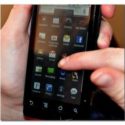Author Interviews, COVID -19 Coronavirus, Technology / 03.02.2022
UCSB Scientists Adapt Smartphone/Lab App to Cheaply and Accurately Detect COVID
MedicalResearch.com Interview with:
Michael J. Mahan Ph.D
Professor
Dept of Molecular, Cellular, and Developmental Biology
University of California, Santa Barbara, CA 93106-9625
MedicalResearch.com: What is the background for this study?
Response: A critical need exists in resource-poor settings for low-cost, low-tech, yet highly reliable and scalable testing for SARS-CoV-2 virus that is robust against circulating variants. (more…)




